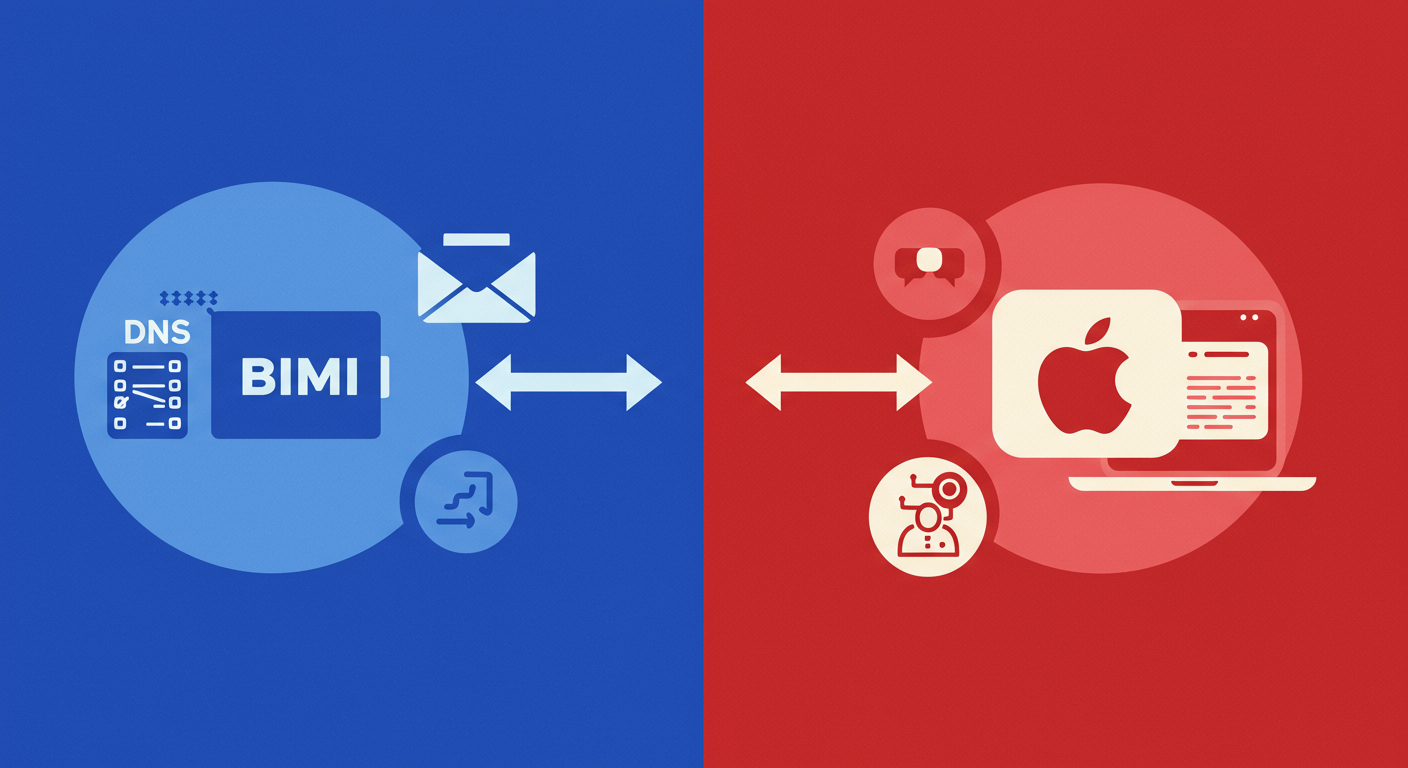
Implementing Brand Indicators for Message Identification, or BIMI, is one of the most visible ways to enhance your email program. It places your brand's logo directly into your customers' inboxes, building trust and recognition at a glance. However, the path to a successful BIMI implementation is paved with technical details, and it's easy to get tripped up. It’s not just a matter of uploading a logo and creating a DNS record.The two most critical components you need to get right are the logo file itself and the accompanying certificate. The logo must be a specially formatted Scalable Vector Graphic (SVG), and the certificate, usually a Verified Mark Certificate (VMC), proves you own that logo. Getting either of these wrong will stop your logo from appearing.In this guide, I'll walk you through the specifics of validating both your BIMI SVG file and your certificate to ensure they meet the strict compliance standards. Following these steps will save you from the common pitfalls and headaches that can stall a BIMI deployment.
Before you can even begin with BIMI, your domain must be properly authenticated. This is a non-negotiable prerequisite. Specifically, you need to have a DMARC policy in place with an enforcement setting of either p=quarantine or p=reject. This proves to mailbox providers that you are actively protecting your domain from spoofing and phishing, which is the foundation upon which BIMI's trust model is built.
Once DMARC is set, the next stage involves two key assets: the SVG logo and a Verified Mark Certificate (VMC). The VMC is a digital certificate, issued by a recognized Certificate Authority (CA), that verifies your organization has the legal right to use the logo because it's a registered trademark. For logos that aren't trademarked, some providers support a Common Mark Certificate (CMC), but the VMC is the industry standard required for the broadest compatibility, including Gmail.
The other critical piece is the logo file. It cannot be a PNG or JPG; it must be an SVG file. More than that, it has to adhere to a very specific profile known as SVG Tiny 1.2 or, more accurately, the SVG Tiny Portable/Secure (SVG P/S) specification. This is a restricted subset of SVG designed for security and interoperability. This is where most people get stuck, as standard graphic design tools do not export to this format by default.

Creating a compliant SVG is notoriously tricky. A logo exported from a tool like Adobe Illustrator might look fine, but its underlying code will almost certainly contain elements that are forbidden by the SVG P/S specification. Things like scripts, external links, or certain styling attributes must be removed, and specific XML elements and attributes need to be present. This often requires manual editing of the SVG file in a text editor.
Since you can't just trust the output of a graphics editor, you must validate the SVG file's code. The official way to do this is by checking it against the Relax NG Compact (RNC) schema provided by the BIMI Group. This process ensures every element, attribute, and value in your SVG's XML code is compliant with the standard.
While this sounds highly technical, you don't need to be an XML expert. There are several free online tools available that function as a BIMI logo validator. You can simply upload your SVG file, and these tools will run the necessary checks against the official schema, telling you whether it passes or fails and often providing clues about what needs to be fixed. This step is essential to catch any hidden issues before you publish your record.
After your SVG is validated and you've obtained your VMC from a Certificate Authority, you'll receive a PEM file. This file contains not just your certificate but the entire certificate chain needed for validation. Both the SVG file and this PEM file must be hosted on a publicly accessible web server that uses HTTPS.
With your assets hosted, the final step is to publish a BIMI record in your domain's DNS. This is a TXT record located at a specific hostname, typically default._bimi.yourdomain.com. The record itself has a specific format that points to the URLs of your hosted SVG and PEM files.
default._bimi.example.com. IN TXT "v=BIMI1; l=https://media.example.com/logo.svg; a=https://media.example.com/certificate.pem;"Validating this final setup involves a few checks. First, use a DNS lookup tool to ensure your BIMI record is published correctly and the syntax is right. Second, double-check that the URLs in the record are correct and that both the SVG and PEM files are accessible to the public via HTTPS. Any broken link, typo, or server misconfiguration will cause the entire process to fail silently. Your logo simply won't show up, leaving you to wonder why.
Successfully implementing BIMI is a game of precision. Every component—DMARC enforcement, SVG format, VMC validity, and DNS record syntax—must be perfect. It requires a methodical approach where you validate each piece of the puzzle before moving to the next. Starting with a compliant SVG is fundamental, as it’s the visual element everyone will see.
Verifying your VMC and ensuring your DNS record is flawless are the final steps that bring it all together. While the process can feel complex, the reward is significant. A verified logo in the inbox not only boosts brand visibility but also serves as a clear signal of authenticity to your recipients, strengthening trust and improving engagement. Taking the time to validate everything upfront will prevent frustrating troubleshooting down the line.










